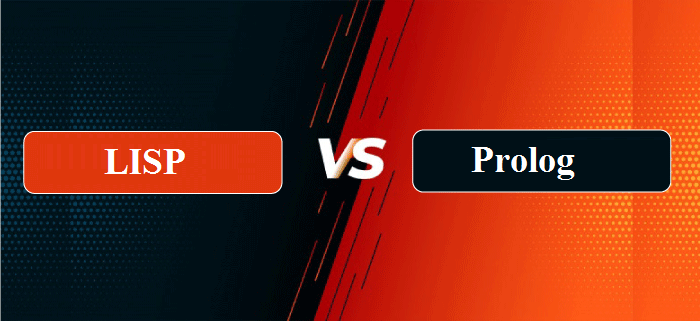Difference between LISP and PrologToday, there are two of the most common AI (Artificial Intelligence) computer programming languages are LISP and Prolog. They are designed with two distinct programming paradigms, and LISP is a functional language, whereas Prolog is a formal language. The main difference between these languages is that LISP was considered a computation model based on the theory of recursive functions. In contrast, the prolog includes a set of formal logic specifications that employ first-order predicate calculus. In this article, you will learn about the difference between LISP and Prolog. But before discussing the differences, you must know about LISP and Prolog with their advantages and disadvantages. What is LISP?LISP is an abbreviation for "LISt Processing". Lisp is a computer programming language family. It is a functional computer language that was created and used by John McCarthy and the MIT group in 1960. It was primarily utilized in the computer science research initiatives, such as those involving artificial intelligence (including theorem proving, intelligent systems, robotics, natural language processing, etc.). The most distinguishing characteristic of LISP language from other languages is the equivalence of forms between program and data, which means that LISP can execute data structures as programs, and programs may be altered as data. Furthermore, despite iteration, it is more dependent on recursion as a control mechanism (looping). LISP generates an interactive environment for running its programs. In an interactive environment, the main program alters the form, and the user inserts the main program as a sequence of expressions to be inspected at the terminal. It doesn't utilize block structure or any other type of complex syntactic organization, and it utilizes calls to communicate with the other functions running simultaneously. Components of LISP ProgrammingThere are mainly two components of LISP programming. These are as follows: 1. Atoms Atoms are the types of identifiers that are utilized in imperative languages. It includes symbols and numeric values. 2. Lists These are an essential component of LISP programming is list processing, which is why they are utilized as a data structure in LISP. Unlike lists in other languages, these lists are defined by delimiting their components within parentheses rather than utilizing the insert and delete operations. Advantages and Disadvantages of LISPThere are various advantages and disadvantages of LISP. Some advantages and disadvantages of LISP are as follows: Advantages
Disadvantages
What is Prolog?Prolog is a logic computer language that is utilized in artificial intelligence and computational linguistics. It is a member of the logic computer language family. Prolog is a declarative language in which computations are carried out by querying the relations that are specified as rules and facts. Prolog was created in 1970, and it is one of the oldest logic programming languages and one of the most common AI programming languages today (along with Lisp). Although it is a free language, there are numerous commercial variants accessible. One of the first logic computer languages was Prolog. It aids the users in several tasks, including term rewriting, type systems, theorem proving, expert systems, natural language processing, and automated planning. It also aids in the development of graphical user interfaces (GUI), administrative apps, and networked applications. Furthermore, it is appropriate for rule-based logical inquiries, including template filling, database searching, and voice control systems. Advantages and Disadvantages of PrologThere are various advantages and disadvantages of prolog. Some advantages and disadvantages of prolog are as follows: Advantages
Disadvantages
Key differences between LISP and Prolog
Here, you will learn the various key differences between LISP and Prolog. Some main differences between LISP and Prolog are as follows:
Head-to-head comparison between the LISP and PrologHere, you will learn the head-to-head comparison between LISP and Prolog. Various head-to-head comparisons between LISP and Prolog are as follows:
ConclusionIn summary, LISP and Prolog are common programming languages for developing AI-based applications. The primary distinction between Lisp and Prolog is that LISP is a computer programming language that supports the reflective, functional, algorithmic, and Meta paradigms. In contrast, Prolog is a computer programming language that supports the logic programming paradigm. LISP utilizes mathematical characteristics of functions, which are difficult to program, whereas Prolog utilizes facts, resolution, rules, query, and unification, which are simple and easy to program. Prolog functions similarly to the human brain, employing pattern matching, backtracking, and a hierarchical structure that humans easily understand. On the other hand, LISP is easier for computers to control.
Next TopicDifference between
|
 For Videos Join Our Youtube Channel: Join Now
For Videos Join Our Youtube Channel: Join Now
Feedback
- Send your Feedback to [email protected]
Help Others, Please Share










